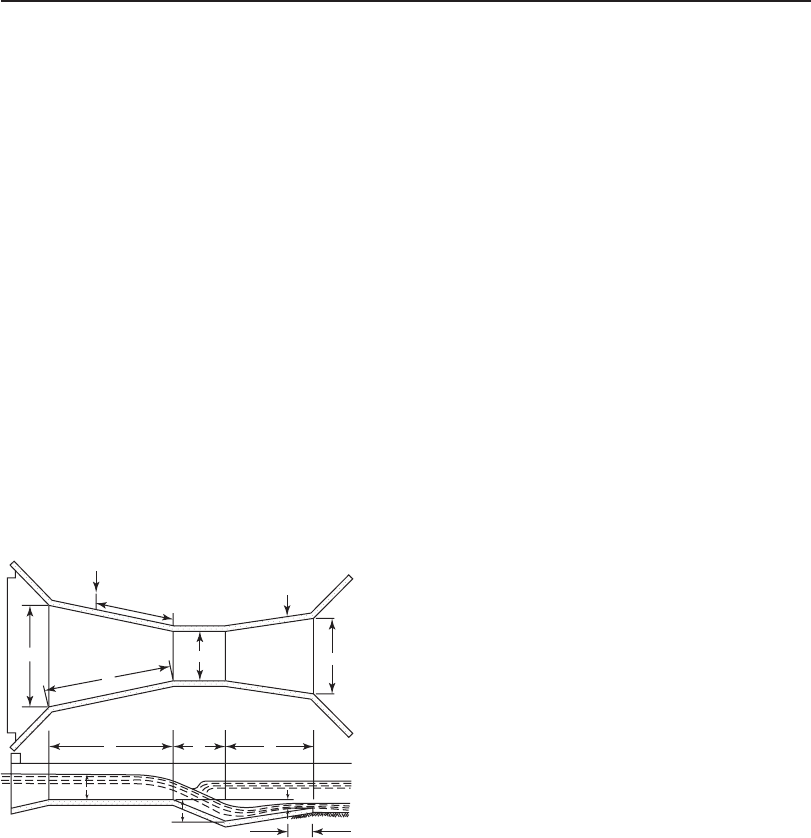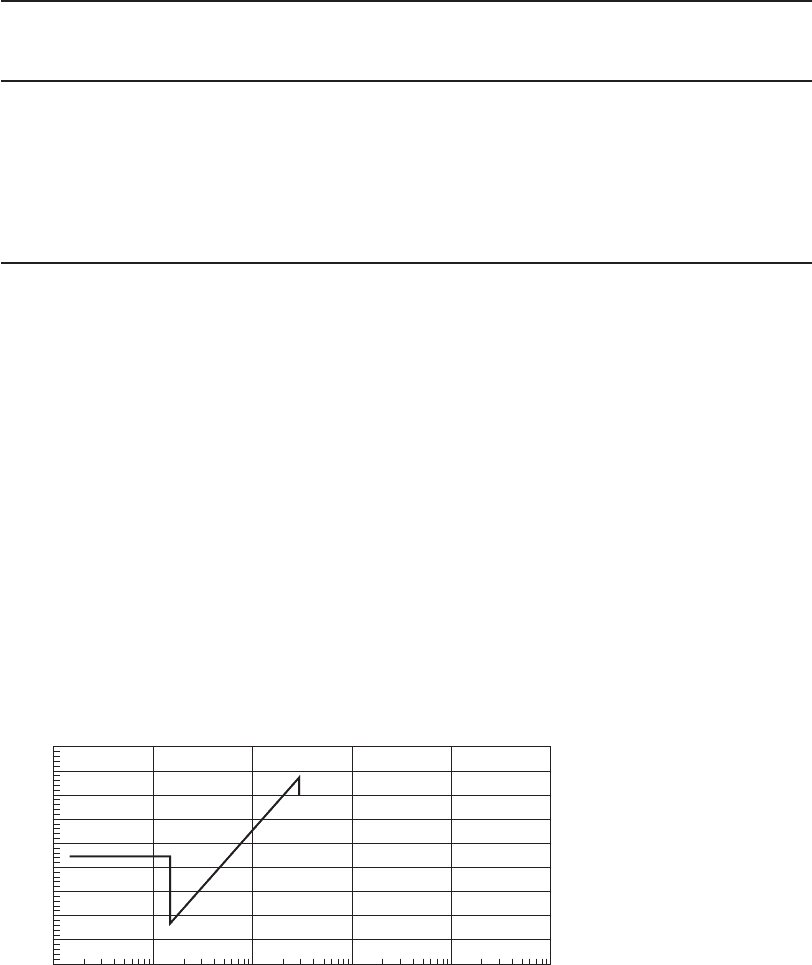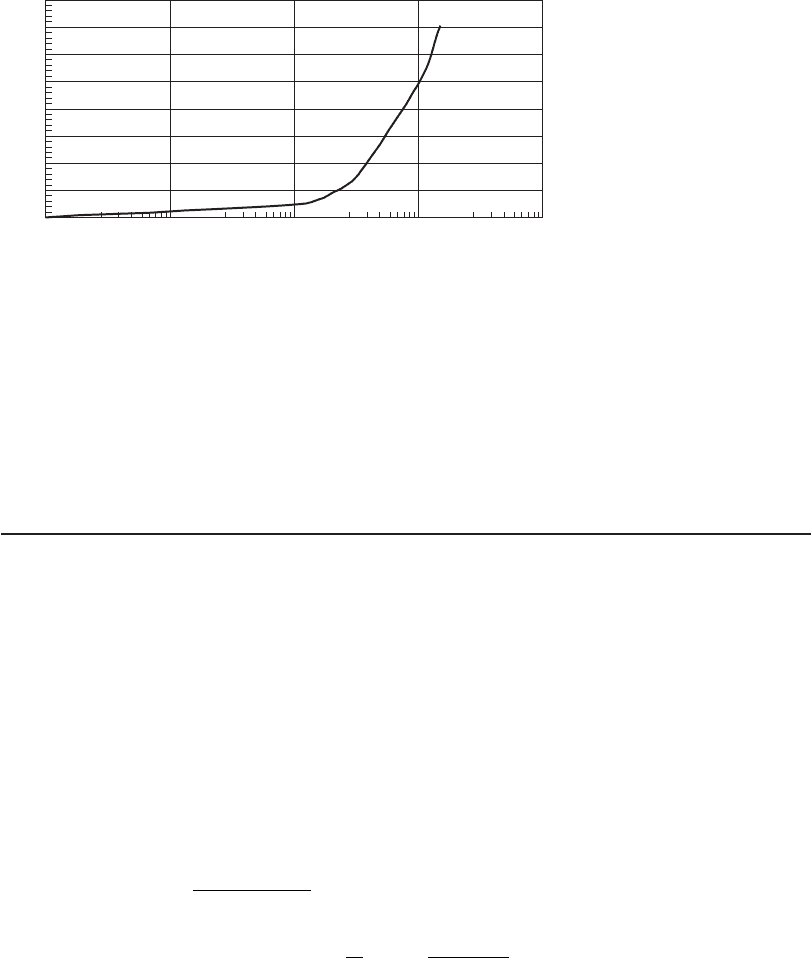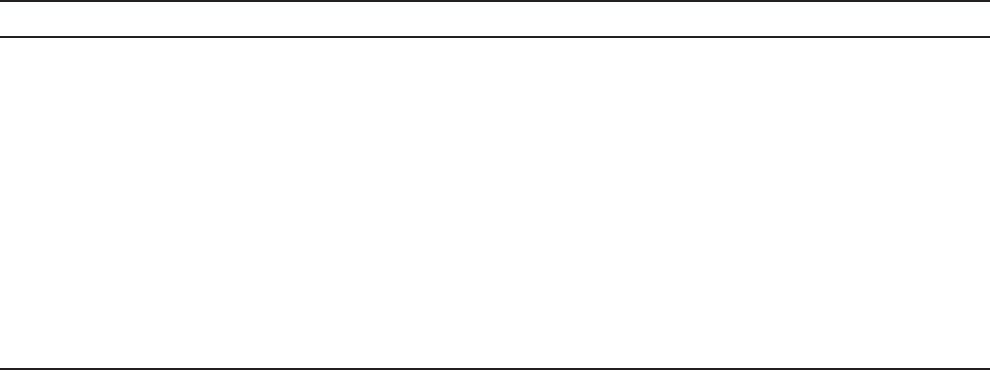Water and Wastewater Engineering
Подождите немного. Документ загружается.


20-1
20-8 ALTERNATIVE PRELIMINARY PROCESS
ARRANGEMENTS
20-9 CHAPTER REVIEW
20-10 PROBLEMS
20-11 DISCUSSION QUESTIONS
20-12 REFERENCES
HEADWORKS AND PRELIMINARY TREATMENT
20-1 INTRODUCTION
20-2 PUMP STATION
20-3 FLOW MEASUREMENT
20-4 BAR RACKS AND SCREENS
20-5 COARSE SOLIDS REDUCTION
20-6 GRIT REMOVAL
20-7 FLOW EQUALIZATION
20
CHAPTER

20-2 WATER AND WASTEWATER ENGINEERING
20-1 INTRODUCTION
Headworks refers to the unit operations that are placed at the upstream end of the wastewater
treatment plant (WWTP). These include the pumping station, flow measurement, and a group of
unit operations commonly referred to as preliminary treatment.
T ypically WWTPs are designed so that flow through the plant is by gravity. The wastewater
frequently is
carried to the WWTP by gravity and, consequently, it is at a substantial depth below
grade. Thus, a pumping station is required to raise the sewage to an appropriate level to facilitate
gravity flow through the plant. Flow measurement is an essential component of the operation and
management of the WWTP.
Preliminary treatment typically serves three important functions: re
moval of untreatable
solid materials; protection of subsequent treatment units; and improvement of the performance of
subsequent treatment units. Preliminary treatment unit operations inclu de: screens, shredders or
grinders, grit removal, and flow equalization.
20-2 PUMP STATION
The design of the pump station (or lift station) at the WWTP is to a great extent similar to those
placed in the collection system. The major differences are that the building components are incor-
porated into the WWTP facility and that an alternative to the nonclog centrifugal pump may be
appropriate. The alternative is a screw pump (often called an Archimedes screw ).
S crew pumps ( F
igure 20-1 ) are high volume, nonclog, atmospheric head devices that can
pump a variety of solids and debris in raw wastewater without screening. There are two general
types: the open screw that rotates in a trough and the enclosed screw, in which both the screw
and the enclosing cylinder rotate. A major advantage of these pumps is variable pu
mping at
constant speed, because the output, up to the design capacity, is controlled by the sump level and
equals the influent flow rate. Operators like screw pumps because the good ones, when properly
installed, are nearly trouble free (Garbus, 2006).
The overall efficiency of the pumping system may be as high a
s 80 percent at design flow.
At approximately 30 percent of design capacity, the efficiency of the open screw drops to about
Delivery point
Water level
Slope angle
One flight
Lift
“H”
Fill point
Two flight
Three flight
FIGURE 20-1
S crew pump arrangement with diagram of multiple flights.

HEADWORKS AND PRELIMINARY TREATMENT 20-3
60 percent because of friction and backflow (called slippage ) of fluid between the flights and
the trough. There is no slippage with the enclosed screw (Garbus, 2006). Major disadvantages
of screw pumps are the large area ( footprint ) of the pumping station because of the angle of the
slope of the screw and limited head (about 10 m) that can be achieved.
Design Considerations. For redundancy, the pump station must have adequate capacity to
handle the peak hydraulic flow rate with the largest pumping unit out of service. Centrifugal
pump selection is made based on the system head curve. Screw pump selection is made from
man
ufacturers’ d ata such as that shown in Table 20-1 . The static lift height is determined based
on the difference in elevation between the low flow into the plant wet well and the required
elevation to overcome headlosses as wastewater flows through the plant (i.e., the hydraulic
grade line).
E xample 20-1 illustrates the procedure for selecting an appropriate screw pump.
Example 20-1. Design a
screw pumping system for Waterloo’s WWTP that has the following
characteristics:
Interceptor sewer
Minimum sewage elevation 514.75 m
M a ximum sewage elevation 515.00 m
D i scharge elevation to stilling well 519.17 m
Average fl ow rate at design capacity 37,000 m
3
/ d
Screw
diameter, m
Maximum
rpm
Maximum capacity at
30 slope, m
3
/h
Maximum height at
30 slope, m
1-flight 2-flight 3-flight 1-flight 2-flight 3-flight
0.30 110 344252 2.4 2.2 2.1
0.41 91 66 83 103 2.9 2.7 2.5
0.51 79 112 140 175 3.4 3.0 3.0
0.61 70 168 210 262 4.0 3.7 3.7
0.76 60 288 360 451 4.2 3.9 3.7
0.91 53 434 542 678 4.8 4.4 4.2
1.07 48 621 776 970 5.3 5.0 4.6
1.22 44 881 1,101 1,376 4.7 4.3 4.1
1.37 41 1,132 1,415 1,769 5.6 5.2 4.9
1.52 38 1,486 1,8582,322 5.2 4.7 4.4
1.68 35
1,774 2,216 2,771 5.9 5.55.1
1.83332,230 2,788 3,484 5.6 5.1 4.7
2.0331 2,791 3,488 4,360 5.1 4.6 4.3
2.1330 3,219 4,023 5,029 5.8 5.3 4.9
TABLE 20-1
Typical screw pump selection chart
a
a
For academic use. Use actual manufacturers’ data for design.

20-4 WATER AND WASTEWATER ENGINEERING
Solution:
a . Calculate the maximum height the screw pump must lift the sewage. This is the dis-
charge elevation minus the minimum sewage elevation.
519 17 514 75 442...mmm
b. Calculate the minimum flow rate at start-up and the peak hour flow rate at design capacity.
Using Figure 18-1 from Chapter 18, find the ratio of the minimu
m hour on the minimum
day to the average flow to be 0.28 and the ratio of the peak hour flow rate at design capac-
ity to the average flow to be 2.8. The flow rates are then
Minimum flow rate m /d 10 36()( )028 37 000
3
., ,00 or 10 400 m /d
Peak hourflowrate
,
.
3
28 3()(77 000
33
,,,m /d 103 600 or 104 000 m /d)
c. Convert the flow rates to m
3
/h to be compatible with the selection charts.
Minimum flow rate
m /d
h/d
o
10 400
24
433 3
3
,
.rr m /h
Average flow rate
m /d
433
37 000
24
3
3
,
hh/d
or m /h
Peak hourflowr
1 541 67 1 5 40
3
,. ,
aate
m /d
h/d
or m
104 000
24
4 333 3 4 330
3
3
,
,. , //h
d. Review the choices from Table 20-1 . Based on the maximum required lift height (4.42 m),
the screw diameters for 1 and 2 flights 0.91 m and 1.07 m for 3 flights will work.
e. The selection process is iterative. Begin by assuming that the smallest acceptable screw
pump is one that will pump at 30% of capacit
y at a reduced efficiency of 60%.
433
0 30
1443
3
3
m /h
m /h
.
,
From Table 20-1 , the standard size screw pump that will pump at this rate is a 1-flight
screw that is 1.52 m in diameter rated at 1,486 m
3
/h.
f. Estimate the number of screw pumps required to meet the maximum flow rate.
4 330
1 486
291 3
3
3
,
,
.
m /h
m /h per pump
or pum pps
g. At the average flow rate, two pumps operating at
1 540
2
770
3
3
, m /h
m /h
or
770
1 486
0 52 52
3
3
m /h
m /h
or % capacity
,
.
will work.

HEADWORKS AND PRELIMINARY TREATMENT 20-5
h. To meet the redundancy requirement to have adequate capacity for the peak hour flow rate
with one pump out of service, a total of four pumps rated at 1,486 m
3
/h will be required.
Comments:
1 . Other combinations will also work. Note that 2 and 3 flights with 1.32 m diameter will
not work.
2. Consultation with the manufacturer may reveal that alternate slopes are available that
may be a better fit.
3. Other manufacturers may have pumps that are a better fit.
20-3 FLOW MEASUREMENT
The two most common flow measuring devic es used for wastewater are the Parshall flume and
the magnetic flow meter.
Parshall Flume
The Parshall flume ( Figure 20-2 ) is an empirically rated measuring device. It was developed by
R. L. Parshall (1926a, 1926b, 1941) under the auspices of the U.S. Department of Agriculture.
The dimensions of the flume are fixed so that there is a flow transition from subcritical to super-
critical flow. The transition is cause
d by designing the flume to narrow to the throat dimension
( W ) while dropping the channel bottom. At critical flow depth, energy is minimized and there is
a direct relationship between water depth and velocity. This allows the flume, like a weir, to be
used as a measuring device. The weir crest throat width ( W ) is used to set the other d
imensions
of the flume. The Parshall flume dimensions are now specified by standard setting organizations
such as ISO (1992) and ASTM (1991). Weir crest widths vary from 25 mm to 15 m to measure
flows from 1m
3
/h to more than 300,000 m
3
/h. A list of dimensions for a limited range of flow
measuring capacities is shown in Table 20-2 .
When the flume is operating under free flow conditions, a hydraulic jump is visible at the
throat. Under these cond itions, the downstream discharge is not submerged at H
b
, and a depth
reading at the upstream point H
a
can be used to gage the flow. If the downstream discharge at H
b
FIGURE 20-2
Parshall flume with identification of measurement locations noted
in Table 20-2 .
H
a
D
W
C
A
H
a
2/3
A
B
F
E
N
G
x
H
b

20-6 WATER AND WASTEWATER ENGINEERING
is submerged, then a correction factor must be applied. Stevens (1998) provides tables for con-
verting the gage reading to flow rate and corrections for submergence.
LMNO (2008) has developed an equation and graphs that may be used for free flow conditions:
Q
CH
n
a
(20-1)
where Q fl ow rate, m
3
/ s
H
a
depth of water at point “a,” m
C and n coeffi cients to be obtained from Figures 20-3 A and 20-3B
This equation is valid for H
a
2 m and 0.152 W 15.24 m.
The Parshall flume is limited to measurement of gravity flow rate. However, the flume is
favored as a flow measuring device because it will pass a wide variety of solids such as rags,
sand, and large objects that potentially will foul other flow measuring devices. Another rea
son
the Parshall flume is favored is that the flow rate can be determined manually by measuring the
water depth. This provides an independent method for calibrating the flume, and it provides
Minimum
flow rate,
m
3
/h
Maximum
flow rate,
m
3
/h
W,
m
A,
m
B,
m
C,
m
D,
m
E,
m
F,
m
G,
mm
N,
mm
x,
mm
5 300 0.15 0.61 0.61 0.40 0.40 0.30 0.61 76 114 51
10 520 0.23 0.88 0.86 0.380.570.30 0.46 76 114 51
40 1,6300.301.371.34 0.61 0.84 0.61 0.91 76 229 51
50 2,450 0.46 1.45 1.42 0.76 1.03 0.61 0.91 76 229 51
70 3,360 0.61 1.521.50 0.91 1.21 0.61 0.91 76 229 51
100 5,100 0.91 1.68 1.64 1.22 1.57 0.61 0.91 76 229 51
130 6,900 1.22 1.83 1.79 1.52 1.94 0.61 0.91 76 229 51
TABLE 20-2
Parshall flume dimensions
A dapted from Parshall in nominal SI equivalent to U.S. customary units. For actual design see Parshall, 1926a and 1926b.
0.01
1.46
1.48
1.5
1.52
1.54
1.56
1.58
1.6
1.62
1.64
0.1 1 10 100 1,000
Throat width, m
n
FIGURE 20-3A
Parshall flume coefficient n.

HEADWORKS AND PRELIMINARY TREATMENT 20-7
redundancy when the electronics fail. A given size of Parshall flume is capable of measuring a
wide range of flow rates. When the flow range from minimum at plant start-up to maximum at
design capacity exceeds the range of a standard flume, a removable prefabricated insert may be
used to accommodate the low flows
at start-up.
The major disadvantage of the flum e is the comparatively large footprint for the structure
and the additional space required to achieve uniform flow into and out of the flume.
E xample 20-2 illustrates the selection of a Parshall flume.
Example 20-2. Continuing with the head works design for Waterloo ( Example 20-1 ), design
a Pars
hall flume by specifying the throat width and estimating the maximum depth of the flume.
Assume free flow conditions and 0.6 m freeboard above the maximum depth.
Solution:
a . Using Table 20-2 , select a throat width of 0.91 m with a maximum range of flows from
100 m
3
/h to 5,100 m
3
/h. This range encompasses the range found in Example 20-1 :
433 m
3
/h to 4,330 m
3
/h.
b. Calculate the depth of flow at 4,330 m
3
/h. Us e Figures 20-3 A and 20-3B to find the
coefficients for Equation 20-1 . For a throat width of 0.91 m, n 1.57, and C 2.5,
convert the peak hour flow rate to appropriate units and solve Equation 20-1 for H
a
.
104 000
120
3
3
1
, m /d
86,400
m /s
/
s/d
.
H
Q
C
a
n
⎛
⎝
⎜
⎞
⎠
⎟⎟
⎛
⎝
⎜
⎞
⎠
⎟
1157
3
120
2 5
0 628 63
/
m /s
.
.
.
.or0.
c. Add the freeboard to the depth of flow to yield
063 06 12... .mdepth for the flume
0.01
0
5
10
15
20
25
30
35
40
0.1 1 10 100
Throat width, m
c
FIGURE 20-3B
Parshall flume coefficient, C.

20-8 WATER AND WASTEWATER ENGINEERING
Comments:
1 . The selection of the throat width fixes the other dimensions of the flume as specified in
Table 20-2 and Figure 20-2 .
2. Although there is no redundancy requirement for the measuring device, it would be pru-
dent to provide some method for bypassing the device to allow maintenance activities to
be perfor
med.
Magnetic Flow Meter
Faraday’s law is the theoretical basis for the operation of the magnetic flow meter (also known as
a mag meter ). It may be summarized as follows:
When an electrical conductor passes through an elec tromagnetic fi eld, an electromotive force or voltage
is induced in the conductor that is proportional to the velocity of the conductor. The voltage thus gener-
ated is mutually perpendicular to both the velocity of the conductor and the magnetic fi eld (Metcalf &
Eddy
, 1972).
This may be expressed as:
EvBL
co
n
ducto
r
" ()( )( )
(20-2)
where E voltage generated , volts
v velocity of the conductor , m/s
B magnetic field , Wb
L
conductor
length of conductor , m
In actual operation the liquid in the pipe serves as the conductor. The electromagnetic field is
generated by placing coils around the pipe ( Figure 20-4 ). The induced voltage is measured by
electrodes plac ed on either side of the pipe. If the pipe is a conductor, the ele
ctrodes do not
have to penetrate the wall of the pipe. The output signal must be calibrated to provide a flow
reading.
The mag meter has the advantage that it can be loc ated on a force main from a centrifu-
gal pump. It can pass objects that can travel in the pipe. The major disadvantage is the de-
pendence on the conductivity of the wastewater, which may vary widely and thus affect the
calibration.
Location
To measure the flow accurately, both the Parshall flume and the mag meter require uniform
flow upstream and downstream of the measuring point. For the Parshall flum e a straight uni-
form channel should be maintained for a reasonable dis tance. An approach equal to at least 10
times the throat width ( W ) is d esirable. Down
stream changes in direction must be sufficiently
distant so that the resulting backwater curve does not reach the flume (Steel and McGhee,
1979). The requirements for the mag meter are illustrated in Figure 20-4 b.

HEADWORKS AND PRELIMINARY TREATMENT 20-9
5 pipe
diameters
Mag
meter
Bypass line
Flow
(b)
(a)
Isolating
valve
(normally full open)
Flow
10 pipe
diameters
Isolating valve
(normally full open)
Bypass valve
(normally closed)
Insulating
liner
Electrode
assembly
Steel meter
body
Magnet coils
Potting compound
FIGURE 20-4
( a ) Schematic of magnetic flowmeter and ( b ) correct installa-
tion locations. (Schematic courtesy of Fisher & Porter.)
20-4 BAR RACKS AND SCREENS
The nomenclature of rac ks and screens is typic ally based on their purpose and the size of the
openings. Table 20-3 provides a summary of the types. The size range of the openings as a means
of differentiation is not well defined.

20-10 WATER AND WASTEWATER ENGINEERING
Bar Rack Cleaning Mechanisms
Although manually cleaned racks are often provided in bypass lines, mechanically cleaned
screens are typically used in the United States. These fall into four categories: chain-driven,
reciprocating rake, catenary, and continuous belt. These are illustrated in Figure 20-5 . Ad
van-
tages and disadvantages of each type are presented in Table 20-4 on page 20-12.
Chain-Driven. In general, front-cleaned, front-return chain-driven screens are more efficient in
retaining captured solids, but they are less rugged and are susceptible to jamming. They are seldom
used for plants receiving combined sewage. Back-c
leaned screens are more rugged but are more
susceptible to carryover of solids to the downstream side. Both types suffer from the disadvantage
of submerged sprockets that require frequent operator attention and are difficult to maintain.
Reciprocating Rake. The reciprocating rake or climber screens i mitate the motion of a person
raking the screen. They
are front cleaned, front return. Thus, they are effective in capture and
discharge of screenings without carryover. They have the advantage that all parts requiring main-
tenance are above the water line. The disadvantages are that a single rake may limit capacity to
handle high loadings of screenings, and they have a requirement for a high overhead clearance to
accommo
date the raking mechanism.
Catenary Screen. The catenary screen is a front-cleaned, front-return chain-driven screen. In
contrast to the chain-driven screens, it has no submerged sprockets. It can handle heavy objects.
It has a large footprint.
Continuous Belt. The continuous belt can handle both fine and coarse solids. It has no su
b-
merged sprocket.
Type Typical opening Typical use
Trash racks 40–150 mm To prevent logs, stumps, and large heavy debris from
entering treatment processes. Principally used in combined
sewers ahead of pumping units. In WWTPs, frequently
followed by coarse screens.
Bar rac
ks or coarse screens 6–75 mm To remove large solids, rags, and debris. Typically used
in WWTP.
Fine screens 1.5–6 mm To remove small solids. Typically follows a
coarse screen.
Very fine screens 0.25–1.5 mm To reduce suspended
solids to near primary treatment
level. Typically follow a coarse screen and/or fine screen.
May be used when downstream processes do not include
primary treatment.
Microscreens 1m–0.3 mm Used in conjunction with very fine screens for effluent
polishing.
TABLE 20-3
Nomenclature of racks and screens
Sources: Daukss, 2006, WEF, 1998.
